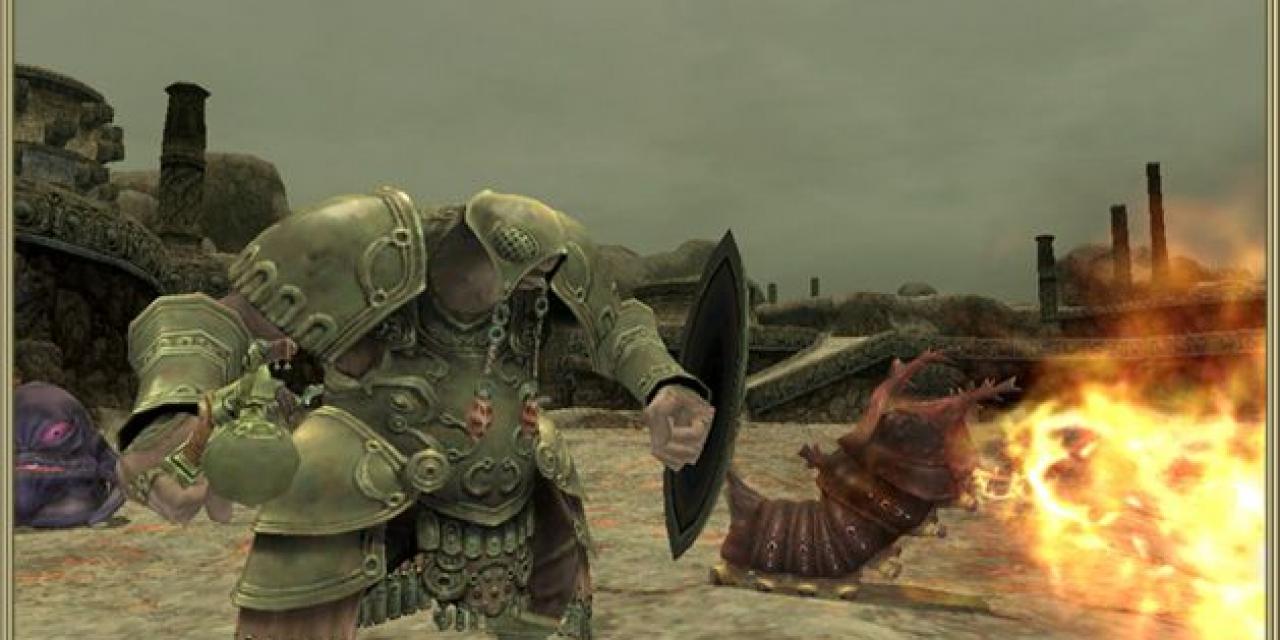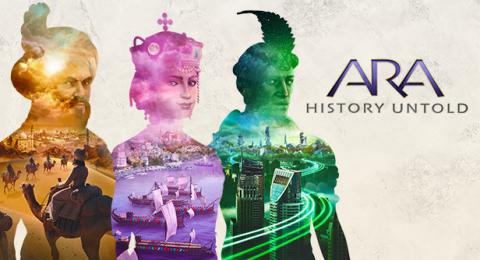




In order to celebrate the imminent arrival of Final Fantasy XI: Treasures of Aht Urhgan for the PC and XBox 360 we have a full history of the epic franchise. Aiming to educate the young and remind the old, MegaGames brings you the Full History of Final Fantasy.
Over the past 19 years, one RPG series has consistently surprised and delighted both gamers and critics, to the extent that it has become the benchmark of the RPG genre.
Japan - Setting the Final Fantasy Scene
The hugely popular genre of RPGs was firmly established in 1986 when ENIX released the first console RPG, Dragon Quest, which sold over 1.5 million copies in Japan.
The success of this game led to a number of other companies developing RPGs of their own. One of these was SQUARE who released Final Fantasy in December 1987. The first game in the series told the story of four warriors of Light who had to vanquish Garland, an evil warrior who came from the past.
The original Final Fantasy set out many of the elements which would be found in future instalments of the series, including the Crystals (integral to the FINAL FANTASY universe) and the class system for characters. The game was a resounding triumph with critics and the general public, and pushed SQUARE to specialise in creating RPGs.
The following year, SQUARE released Final Fantasy II in Japan which displayed several advances over its predecessor. The characterisation of the protagonists was deeper and the story more advanced; the game's heroes, Firon, Leon, Maria and Gus, were four young people who had to fight the evil Palamecia Empire.
The success of the series was sealed with the release of Final Fantasy III in 1990: over 1.4 million copies were sold in Japan. The most notable feature was the refinement of the class system, with each crystal allowing characters to learn new abilities.
Following the release of Final Fantasy III in 1990, SQUARE continued to develop and publish Final Fantasy adventures in Japan, and some seven years later, the Final Fantasy phenomenon would reach International shores.
1997 - Final Fantasy's International Adventure Begins
Final Fantasy VII
Released in November 1997, Final Fantasy VII marked the first ever international Final Fantasy release, available on Sony's PlayStation, a surprise for most who expected a N64 version. The hero of the game was Cloud Strife, a young man who joined forces with AVALANCHE, a resistance organisation which was trying to combat the evil machinations of the SHINRA.
FINAL FANTASY VII was a huge success and was one of the first truly great RPGs on the PlayStation. Final Fantasy VII was the first in the series to integrate the now obligatory FMV sequences.
Final Fantasy VIII
In October 1999, the much-awaited Final Fantasy VIII was released. SQUARE had gone all-out on the realism front, with respect to both storyline and character design. The characters were much more realistic (worlds away from the super-deformed characters of the first Final Fantasies), the style was super-slick hi-tech and the central themes of the story were love and identity.
Final Fantasy VIII still remains the biggest seller of the series: over 3.6 million copies in Japan alone and over 1.9 million copies in Europe. It was also the first to have its own theme song, Eyes On Me (sung by Hong Kong's Faye Wong).
Final Fantasy IX
Final Fantasy IX was released on PlayStation in February 2001. SQUARE decided to go back to its roots and the game took players firmly back to a heroic fantasy universe full of knights, princesses and black mages, and the Crystals returned.
Technically, Final Fantasy IX was superb, with the FMV sequences reaching a level so far unsurpassed; the process of returning to the games' original roots allowed SQUARE to reconcile original fans of the series with those who'd discovered the game with the advent of the PlayStation. The game went on to sell over 900,000 copies in Europe alone.
Final Fantasy - Back to the Future
Although the world's fascination with Final Fantasy began with Final Fantasy VII, many fans wanted to enjoy earlier Final Fantasy adventures that had only been available in Japan. SQUARE made the decision to re-release some of its back catalogue on Sony's PlayStation console.
Final Fantasy VI
Final Fantasy VI was released in February 2002, after Final Fantasy VII, VIII and IX, and is still one of the best-loved of the series. The 14 playable characters were highly developed, each with his or her particular story and crucial role to play. Although released later internationally, Final Fantasy VI was originally celebrated in Japan because it moved away from many of the conventions established by previous episodes: crystals disappeared and the atmosphere was far darker and more high-tech (a trend which continued in the two subsequent Final Fantasies).
Final Fantasy Anthology
Released on PlayStation in May 2002, Final Fantasy Anthology comprised both Final Fantasy IV and Final Fantasy V.
In Final Fantasy IV the main protagonist was the Black Knight Cecil Harvey who turned against the evil empire he loyally served in order to defeat the evil Golbez. SQUARE played the storyline card to good effect: the plot fizzled with twists and turns and was driven by powerful themes: treachery and the sacrifice of the individual for the greater good. Final Fantasy IV also introduced airships to the series: these would appear in one guise or another in subsequent Final Fantasy adventures.
In Final Fantasy V the number of playable characters was reduced to five and the class changing system returned. The world these characters inhabited was firmly rooted in heroic fantasy and the atmosphere tinged with melancholy: the protagonists' often tragic backgrounds were revealed through a series of flashbacks.
Final Fantasy X
The release of Final Fantasy X in May 2002 marked the long-awaited arrival of the series to the PlayStation 2. The main theme of the game was journey - both main protagonists' (Tidus and Yuna) physical journey to defeat the monster which was threatening their world, and their internal journey to discover themselves.
Final Fantasy X was the first in the series to feature full 3D environments allowing seamless integration of real time and CG sequences. The environment was based on the lush graphics courtesy of art director Yusuke Naora, and the title was also a first in that it featured voice acting.
Final Fantasy Origins
In March 2003, SQUARE also released the very first two Final Fantasy games in the form of the aptly named Final Fantasy Origins. Re-released for the original PlayStation, the games gave fans the chance to experience and enjoy the very early beginnings of the classic RPG adventure series.
Final Fantasy X-2
February 2004 saw the European release of Final Fantasy X-2, the first and only direct sequel to any Final Fantasy game. Final Fantasy X-2 brought back the cast and wonderful world of Final Fantasy X for another epic adventure. For the first time ever in a Final Fantasy game, players could switch the characters job classes in the heat of battle utilising the newly created Garment Grid. The game sold over 900,000 copies across Europe.
Final Fantasy XI
Final Fantasy XI was released on Windows in September 2004 marking the next step in the evolution of the series by taking the world of Final Fantasy online. The game allowed players from all over the world to team up, form parties and explore the gigantic universe contained within the game, which has been made even larger with the Rise of the Zilart and Chains of Promathia expansion packs.
In Final Fantasy XI, players undertake multiple adventures through vast environments in the world of Vana'diel, which has more than 100 areas to explore, including mountains, forests, glaciers, deserts, oceans, rivers, castles and dungeons. Players travel through these areas using various modes of transportation including chocobos, ferries and airships.
The game allows players to create an alter ego who will exist in the world of Vana'diel, choosing from a variety of races, facial features and hairstyles. Gamers can play at their own pace and form parties by utilising the various communication tools that have been incorporated into FINAL FANTASY XI, including easy-to-use chat and messaging systems.
Final Fantasy XI 2006
Final Fantasy XI: Treasures of Aht Urhgan is the third expansion pack for the successful MMORPG Final Fantasy XI. The game will receive a simultaneous release in Europe, North America and Japan on Thursday, April 20th 2006.
Final Fantasy XI is also the first in the series to be released on Microsoft's Xbox 360. Due for release on 20th April, the game also features adventures from all three Windows expansion packs.
Final Fantasy VII Advent Children
Last but not least, a fully-animated motion picture, Final Fantasy VII Advent Children, which continues the story of what many regard as the definitive Final Fantasy, will be released on UMD for PSP and DVD in April 2006.








